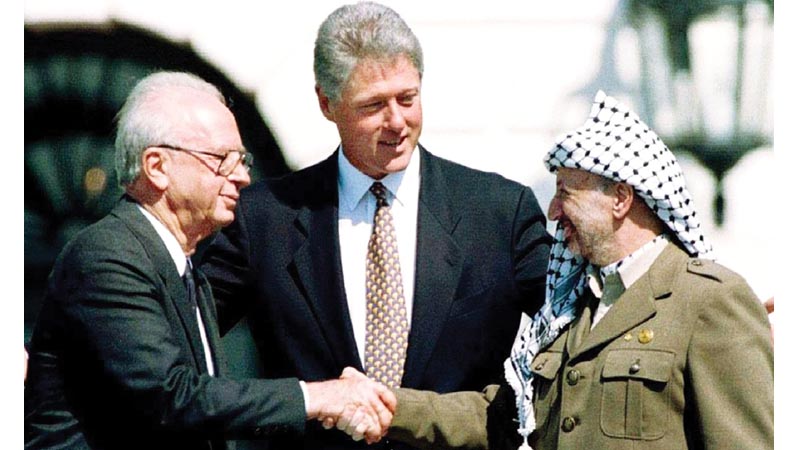Rabin and Arafat sign accord for Palestinian self-rule

On 4 May 4, 1994, Israeli Prime Minister Yitzhak Rabin and PLO Chairman Yasser Arafat reached agreement in Cairo on the first stage of Palestinian self-rule.
The agreement was made in accordance with the Oslo Accords, signed in Washington, DC on 13 September, 1993. This was the first direct, face-to-face agreement between Israel and the Palestinians and it acknowledged Israel’s right to exist. It was also designed as a framework for future relations between the two parties.
The Gaza-Jericho agreement signed on this day in history addressed four main issues: security arrangements, civil affairs, legal matters and economic relations. It included an Israeli military withdrawal from about 60 percent of the Gaza Strip (Jewish settlements and their environs excluded) and the West Bank town of Jericho, land captured by Israel during the Six-Day War of 1967. The Palestinians agreed to combat terror and prevent violence in the famous “land for peace” bargain.The Israeli Defense Forces withdrew from Jericho on May 13 and from most of the Gaza Strip on May 18-19, 1994. Palestinian Authority police and officials immediately took control. During the first few days there was a spate of attacks on Israeli troops and civilians in and near the Strip. Arafat himself arrived in Gaza to a tumultuous, chaotic welcome on 1 July.
The momentum toward peaceful relations between Israel and the Palestinians was seriously jolted by the outbreak of the 2000 Palestinian uprising, known as “Second Intifada.” Further strain was put on the process after Hamas came into power in the 2006 Palestinian elections.
History




